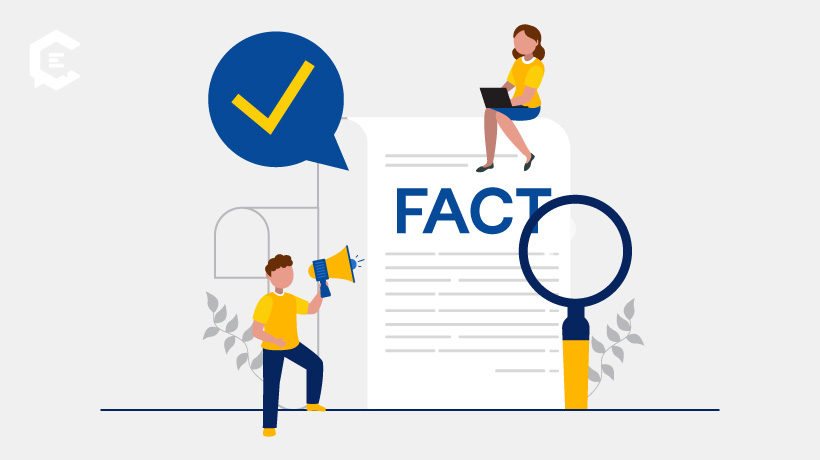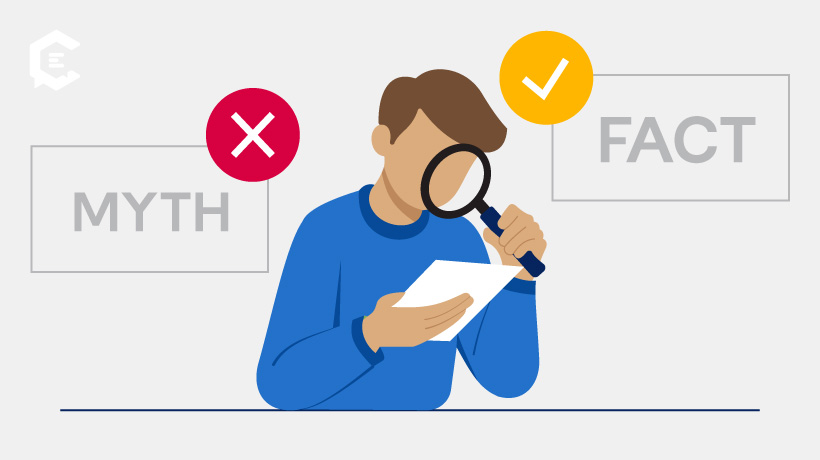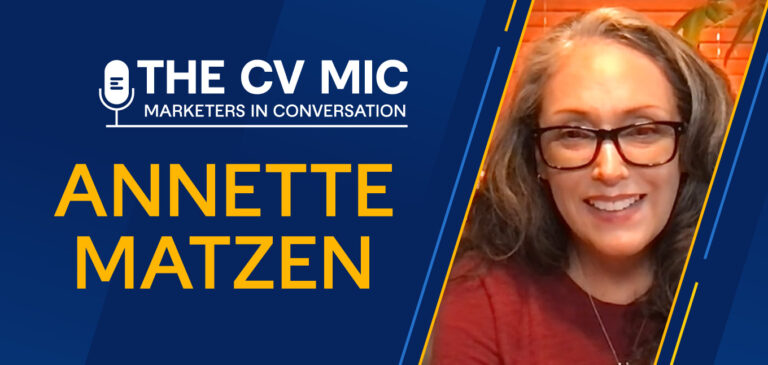What is fact-checking? Fact-checking is the process of verifying the accuracy, authenticity, and reliability of your content. This includes confirming statistics, validating claims about products or services, cross-referencing data sources, and ensuring all statements can be substantiated with credible evidence and sources.
Unlike general proofreading, which focuses on grammar and formatting, fact-checking ensures your content is accurate. It involves researching original sources, confirming data accuracy, and verifying that your information remains current and relevant.
Whether you’re a business owner or marketer, producing accurate content is essential for maintaining your professionalism and reputation.
Why Fact-Checking Matters for Brands
Publishing accurate information affects every aspect of your marketing performance, from search rankings to customer trust.
Builds Credibility and Trust
In the era of fake news, accuracy is more important than ever. Error-free content tells prospective customers that your business is trustworthy and gives them the confidence to buy.
Plus, Google evaluates your content for quality using its E-E-A-T guidelines (experience, expertise, authoritativeness, and trustworthiness). If it’s not credible, your rankings may drop, or you could even receive a penalty.
Helps Avoid Legal and Compliance Issues
Fact-checking marketing content is essential for protecting your business. Inaccurate claims about products, services, or industry data can result in regulatory violations, consumer protection issues, and potential lawsuits.
In highly regulated industries, such as healthcare, finance, or banking, accuracy becomes even more crucial. This is due to the strict requirements surrounding privacy, anti-spam laws, trademarks, image rights, FTC regulations, and more.
Improves Audience Engagement and Conversions
Factually accurate content improves audience engagement and conversion rates. When prospects trust your information, they’re more likely to engage with your brand and move through the sales funnel.
6 Common Types of Marketing Claims That Need Verification
Different types of content require different levels of verification. Here’s what to pay attention to in your blog posts, web copy, ebooks, and more.
- Statistics: Confirm statistics come from reputable sources, always cite the original source, check publication dates for currency, and double-check that you’ve interpreted the data correctly.
- Case studies: Verify accuracy of stats, claims, and business outcomes. Including testimonials? Always get customer permission before publishing a case study.
- Product features and specifications: Check technical details with product teams and ensure alignment with testing results.
- Industry trends and market data: Verify information through authoritative sources, such as industry reports and government databases. Be cautious of outdated or potentially biased data.
- AI-generated content: If you’ve ever used an AI tool, you know it can produce plausible but inaccurate information. Verify all facts, figures, quotes, and claims before publishing.
- Competitor comparisons: Claims about how your product/service compares to competitors require careful verification to avoid legal issues and ensure accuracy.
- Regulatory and compliance statements: Fact-check current regulations and legal requirements, including privacy policies, certifications, and compliance claims.
How to Fact-Check Your Content Marketing
Ready to build fact-checking into your content production process? These practices will help you verify information quickly while maintaining your content schedule.
Evaluate Sources and Assess Credibility
When you find compelling data for your next blog post, take a moment to evaluate the source quality:
- Prioritize primary sources, such as original research and government databases, over secondary ones
- Always check that you’re linking to the original source. Stats are recycled so much online that it’s like a game of telephone. Find the original source and double-check that you have the information correct.
- Check author credentials and publication reputation before citing information
- Watch for bias from sources with commercial interests or specific agendas
Establish an Internal Review Process
Establish clear protocols for different types of content, particularly for high-stakes or technical pieces. Consider having multiple people review complex information before it goes live.
Create simple checklists that cover the most important verification steps for your team. This helps ensure nothing gets missed when you’re working under tight deadlines.
Assign Clear Roles and Responsibilities
Make sure everyone knows who’s responsible for fact-checking:
- Assign specific fact-checkers for different topics
- Create backup plans when your primary reviewer isn’t available
- Define who can approve different types of claims and content
For example, you might have an accountant review financial projections, a product manager verify feature claims, and a compliance officer check regulatory statements.
Set clear expectations for what constitutes acceptable sources and the amount of time to allocate for verification tasks.
Integrate Fact-Checking into Your Content Workflow
Build verification steps into your editorial calendar so fact-checking happens naturally rather than as a last-minute scramble. Ensure it happens early enough in the content development process to leave time for any necessary fixes.
Fact-Checking Tools and Resources
Fact-checking in marketing is non-negotiable. While it will always require manual oversight, the following tools and resources will speed up the process.
- Google Fact Check Explorer for identifying previously fact-checked claims
- Reverse image search tools like Google Images and TinEye let you verify visual content
- Plagiarism detection software, like Copyscape and Grammarly, to identify potential content issues
- Domain analysis tools (Whois and website authority checkers) to assess website credibility
Build a database of trustworthy sources so you have them handy when you start writing. If you outsource, this is a helpful SOP to create for your freelancers.
Consider sources like:
- Government databases (Census Bureau, Bureau of Labor Statistics, SEC filings)
- Academic journals and peer-reviewed research
- Industry associations and their published research or reports
- Leading industry blogs and websites
- Established news organizations
- Professional research organizations like Pew Research, Gallup, or McKinsey
- Expert interviews and in-house subject matter experts
- Expert reviews to verify your content’s accuracy
Accurate, well-researched content builds lasting trust. ClearVoice’s managed content solutions include rigorous fact-checking processes to ensure your content meets the highest standards of accuracy and credibility. Talk to a ClearVoice content specialist today to learn more.





